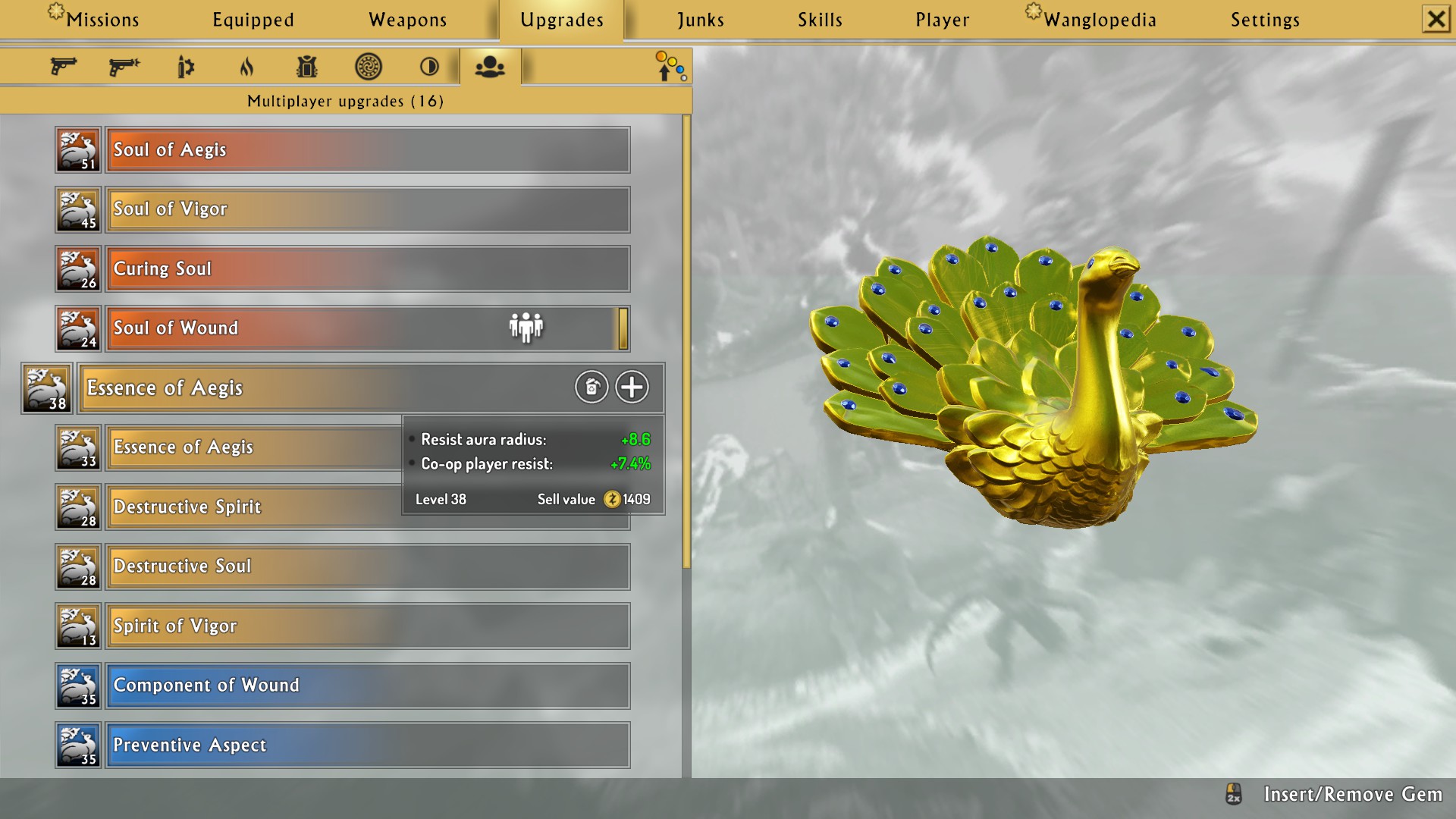
Shadow Warrior's progression system was a more straightforward affair with money being used to buy upgrades for your guns, and “Karma” points and “Ki Crystals” to unlock new abilities. Shadow Warrior 2's progression is a little more modular in nature. There are a total of 70 weapons in the game for you to find and collect. Some of these are given as rewards for completing missions, some you find from killing unique boss enemies, and some are available for purchase from the merchant NPCs.
Every weapon has three upgrade slots that can be used to modify that weapon’s abilities in some interesting ways. For instance, you can turn your regular old pistol into gun that shoots bullets that not only penetrate through enemies, but also poisons them with toxic damage. Or maybe you prefer to go guns akimbo and dual-wield a pair of SMGs that spit fire. There are a lot of ways for you to kit out your gear with the limitless upgrades you’ll find randomly throughout the game (this is where the loot-shooter aspects come into play), but they all fit into one of eight categories: weapon upgrades, fire modes, ammo upgrades, elemental upgrades, armor upgrades, amulets, powers upgrades, and multiplayer upgrades.
Weapon, fire mode, ammo, and elemental upgrades all affect the behavior of whatever weapon into which you slot them as previously described. Armor upgrades will provide passive bonuses, such as increased damage resistance or a damage boost to tougher enemies, while the amulets have much bigger impacts, like increasing the damage you deal with guns at the expense of increasing the cost of your chi powers (i.e., “spells” that heal you or push enemies back or temporarily make you invisible). Powers upgrades boost the effectiveness of your chi powers, such as increasing their duration or decreasing their casting cost, and finally multiplayer upgrades will provide boosts to your co-op partners.

The first time you pick up an upgrade, you get a quick on-screen message that informs you that you can slot it into a weapon to gain some benefits. It doesn’t go on to tell you why you might prefer to choose some upgrades over others, or that there are different quality versions of the upgrades, or even that the elemental damage plays a key role in defeating some enemies as later foes will have certain elemental weaknesses and resistances. It leaves much of that for you to discover and experiment with on your own, which is fine to a degree, but the first couple of hours of the game I spent way more time inside menus than I should have trying to figure some of that out. The fact that you can acquire around 20 or so upgrades per mission doesn’t help, either, as it’s easy to get confounded by the myriad of options before you.
Once you get done parsing through all the various upgrades, abilities, and weapons you have at your disposal, you can start to focus on your ideal Lo Wang “build.” If you prefer guns over melee weapons and chi powers, then you can customize your arsenal to suit that and spend your skill points on abilities, such as automatically reloading guns you’re not using, that support this kind of play style. If you want to get up close and personal with your katanas and chainsaws, you can do that, too. Or maybe you prefer to be an elemental powerhouse, using a combination of elemental upgrades and abilities to turn every enemy you encounter into a frozen popsicle or a smoldering pile of ash. Between the upgrades, character abilities, and weapons, there are enough customization options in Shadow Warrior 2 that you have the freedom to engage with the game’s first-person shooter action in whichever way you see fit.
The customization system in Shadow Warrior 2 is a good addition, but it’s one that feels best suited to muck around with much later in the game rather than early on; especially once the game starts throwing in more enemies that deal elemental damage and are weak to certain damage types.
By the latter half of the game, you’ll start to encounter Superior and Elite enemies with far greater frequency. These special foes are the equivalent of rare mob packs and Champions in Diablo III, and even come with special attributes like “fire resistant”, “vital” (meaning they regen health), and “toxic vulnerable.” Generally speaking, these foes will deal elemental damage based on whatever element to which they are resistant, i.e., enemies that are “electric resistant” will deal electric damage. So, not only do you need to be dealing elemental damage to them based on their vulnerability, but you also need to have enough elemental resistance that you mitigate the damage they’re dishing out to you.